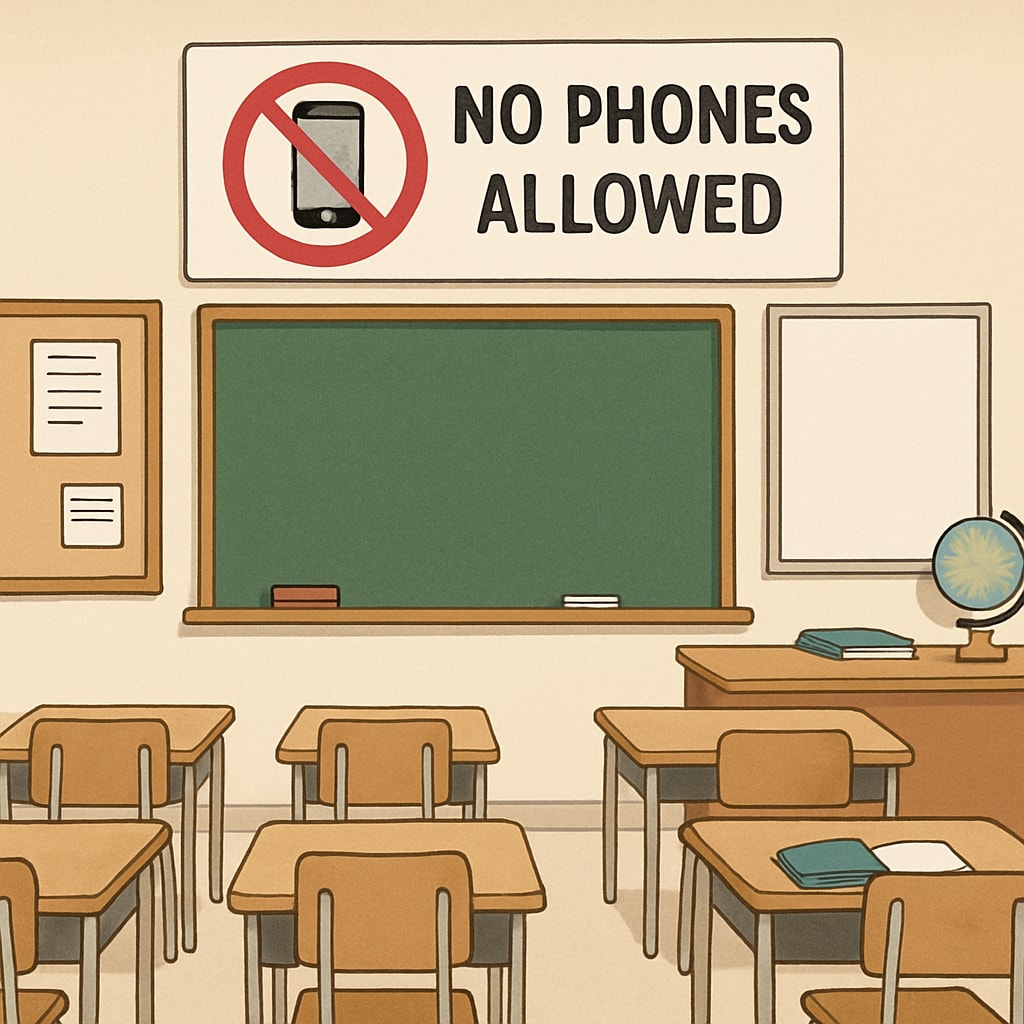In recent years, several states and school districts have implemented K12 school phone bans to create more focused learning environments and address safety concerns. These policies aim to reduce distractions, improve learning outcomes, and ensure student well-being. However, the implications of such bans extend beyond the classroom, affecting areas like implementation costs, equity in education, and digital literacy. This article explores the multifaceted impacts of these policies and offers practical alternatives that balance classroom focus with the growing need for digital skills in the modern world.
How Phone Bans Influence Learning Environments
One of the primary motivations for implementing school phone bans is to enhance learning environments by minimizing distractions. Smartphones are often a source of off-task behavior, with students using them for social media, gaming, or messaging during instructional time. By removing phones from classrooms, educators report fewer interruptions and increased student engagement.
However, critics argue that outright bans may limit opportunities for integrating technology into learning. Smartphones can serve as powerful tools for research, interactive learning apps, and real-time collaboration. Schools must weigh the benefits of reduced distractions against the potential loss of valuable educational resources.

The Role of Phone Bans in School Safety
Another critical dimension of phone bans is their impact on school safety. Proponents claim that limiting phone use can reduce cyberbullying, inappropriate sharing, and distractions during emergencies. In addition, fewer phones in schools mean less opportunity for unauthorized recordings or data breaches.
Conversely, some parents and students express concerns about restricted communication during emergencies. In crisis situations, phones can provide a direct line to emergency services or family members. Schools implementing bans must ensure robust alternative communication systems are in place to maintain safety and trust.
Implementation Challenges and Costs
Enforcing a phone ban comes with logistical and financial challenges. Schools need clear policies, staff training, and sometimes even storage solutions for confiscated devices. These measures can strain already limited budgets and resources, particularly in underfunded districts.
Moreover, inconsistent enforcement can lead to confusion and resentment among students. Schools must establish transparent guidelines and equitable practices to ensure the policy is both fair and effective.

Addressing Equity Concerns
Phone bans can disproportionately affect students from low-income families who rely on their devices for homework, internet access, or navigating transportation. For these students, smartphones are not just entertainment tools but essential resources for daily life.
To address these disparities, schools can invest in alternative solutions such as lending laptops or providing after-school access to technology. Ensuring that all students have equal opportunities to succeed is crucial when implementing such policies.
Alternative Strategies to Balance Focus and Digital Literacy
While phone bans aim to improve focus and safety, they may not fully align with the growing need for digital literacy. Instead of outright bans, schools can adopt balanced approaches, such as:
- Designated phone-free zones: Establish areas where phones are not allowed, such as classrooms, while permitting their use in common spaces like cafeterias or hallways.
- Scheduled phone use: Allow limited phone use during specific times, such as breaks, to encourage responsible habits.
- Digital literacy programs: Integrate lessons on responsible phone use, online safety, and digital ethics into the curriculum.
- Classroom technology alternatives: Provide school-issued devices with restricted functionalities to support learning without distractions.
By implementing these alternatives, schools can foster a balanced environment that prioritizes both academic focus and the development of essential digital skills.
Conclusion: Striking the Right Balance
The debate over K12 school phone bans highlights the complexities of balancing educational priorities in the digital age. While these policies can improve classroom focus and reduce safety risks, they also present challenges in terms of equity, implementation, and the cultivation of digital literacy. By exploring thoughtful alternatives and addressing the unique needs of their communities, schools can create policies that support both academic success and the technological preparedness of their students.
Ultimately, achieving this balance requires collaboration among educators, parents, and policymakers to ensure that the next generation is equipped to thrive in an increasingly digital world.
Readability guidance: Short paragraphs, lists for clarity, and consistent use of transition words ensure the article is accessible and engaging. The balance of active voice and concise sentences enhances readability.


